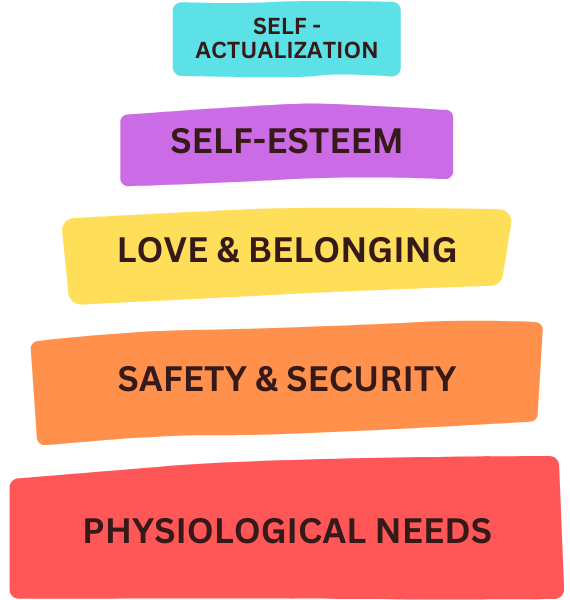Let’s kick things off with a definition: Emotional branding is a marketing strategy that aims to create a deep, meaningful connection between a brand and its customers by appealing to their emotions, values, and aspirations. It’s a tactic proven to help attract and connect with audiences.
Based on that description, emotional branding seems like an ideal strategy for a sector with an abundance of opportunities to showcase storytelling and experiences that emotionally resonate with audiences. So how can we specifically hone in on emotional branding for museums? Let’s review data from recent studies and surveys to find out.
Where to begin
 When starting on your emotional branding journey, consider Maslow’s hierarchy of needs:
When starting on your emotional branding journey, consider Maslow’s hierarchy of needs:
- Physiological needs (food, clothing, shelter)
- Safety and security (health, employment)
- Love and belonging (family, friends, intimacy, connection)
- Self-esteem (confidence, the need to be a unique individual)
- Self-actualization (morality, inner-potential, meaning, purpose)
How does your museum help satisfy these needs? As you ponder this, determine what is really special about your museum. Think about what your specific audience desires in life and where your museum can overlap with those desires.
Tip: For this kind of brainstorming, consider creating a brand team comprised of a cross-section of employees and volunteers.
The objective is to give people an emotional reason to visit, to contribute financially, and to speak up for your museum, even sharing in your marketing efforts through positive word of mouth.
Note: One purported benefit of emotional branding is that it can create sustained loyalty. While this is ideal and, of course, always the goal, museums should also consider engagement boosts that might not necessarily translate to lifelong patrons. As pointed out by the American Alliance of Museums after reviewing data from its Annual National Snapshot Survey: Short-term support can still aid the mission and the organization.
An emotional hierarchy for museums
In addition to Maslow’s hierarchy of needs, which provides a basic framework for crafting emotional branding strategies, a recent study by Art Fund identified three key emotions you’ll want to appeal to when brainstorming messaging:
- Feelings of pleasure (entertainment, awe, wonder)
- Feelings of connection (relevance, understanding, ownership, being “seen”)
- Feelings of purpose (responsibility, empowerment, knowledge, importance)
 The understanding is that pleasure is easiest to foster, then connection, then purpose. Create your messaging by working up this pyramid — communicate pleasure first, then connection, etc.
The understanding is that pleasure is easiest to foster, then connection, then purpose. Create your messaging by working up this pyramid — communicate pleasure first, then connection, etc.
Be sure to check out Art Fund’s fantastic WOW Toolkit for detailed insights into how museums can use emotional branding to grow their support and capture loyalty.
Tip: Consider all emotions, not just positive ones. Sadness, pain, fear, and anger carry considerable emotional weight, and explorations of unhappy emotions and stories can be extremely resonant.
Data-driven emotional branding best practices
1. Think about the visuals
Here’s where the museum sector has an edge, since museums by nature are filled with interesting visuals. Explore video, untapped social channels (and their associated imagery styles), well-considered photos, even illustrations to help with your branding. Keep brand cohesion in mind and be visually consistent in order to establish a familiar look regardless of the marketing focus or campaign.
Tip: It can be difficult for those working within the museum sector to think outside the box when it comes to museum marketing. But marketing is a HUGE industry with many skilled players. When possible, consider bringing in freelancers, producers, or outside agencies to provide “fresh eyes.”
2. Authenticity is everything
People respond favorably to brands that create a sense of shared values. And authenticity is huge. Highlighting your museum’s authenticity and meaningful values allows for a strong emotional connection with the community.
3. Humanize interactions
There can be a gap between museums and the public in terms of the humans behind the exhibits. Sometimes even the language used in museum marketing — artistic lingo, for example — can confuse people or fail to have the desired impact. Use ordinary language to humanize your museum and help potential visitors feel seen and important. Make your interactions genuine.
4. Invite engagement
To further humanize your museum in efforts to foster emotional connection, try to engage with visitors more: reply to reviews and comments, share user-generated content on social media. Always consider what excites your audience, not just what you want to say.





